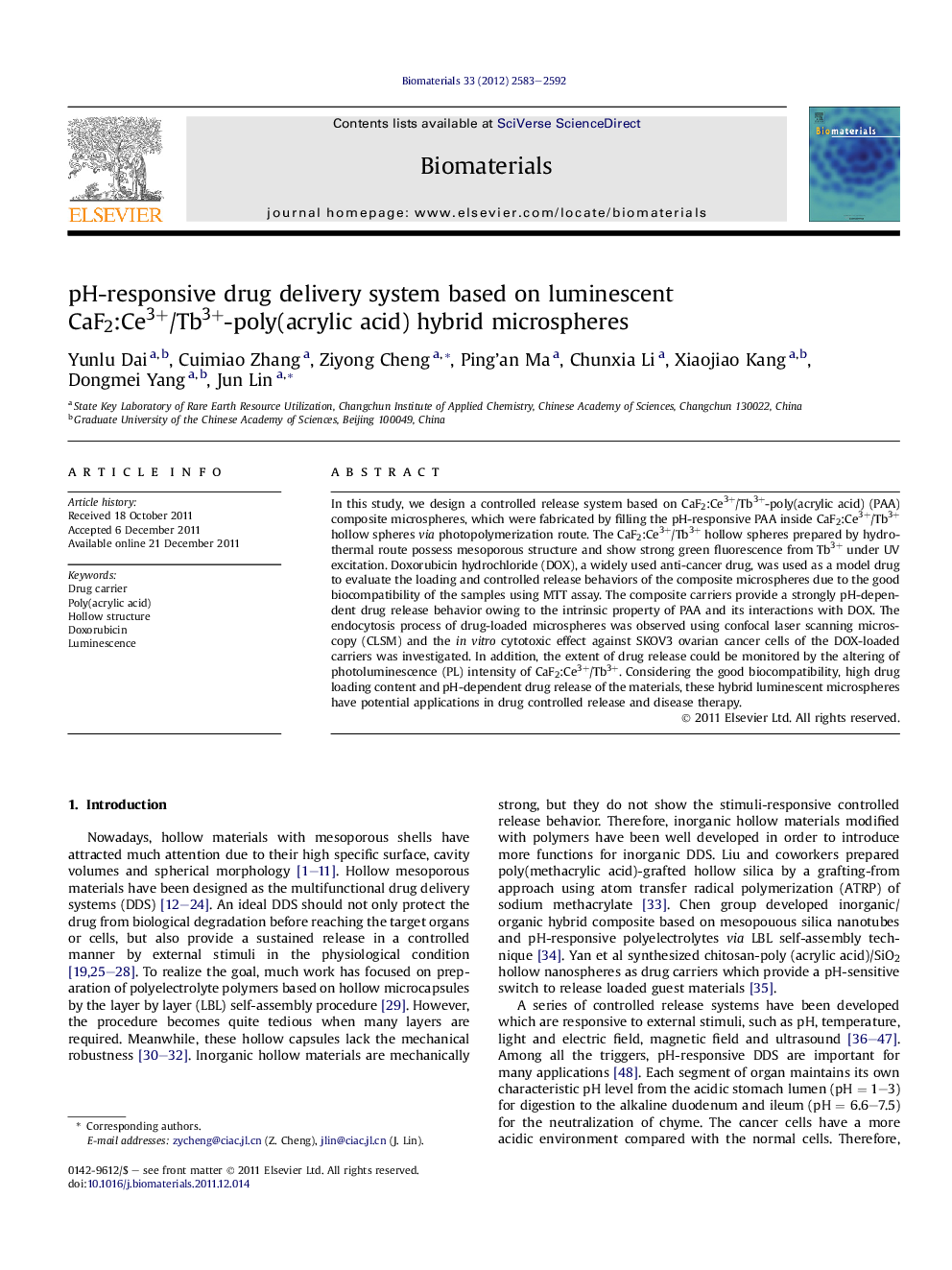| Article ID | Journal | Published Year | Pages | File Type |
|---|---|---|---|---|
| 6998 | Biomaterials | 2012 | 10 Pages |
In this study, we design a controlled release system based on CaF2:Ce3+/Tb3+-poly(acrylic acid) (PAA) composite microspheres, which were fabricated by filling the pH-responsive PAA inside CaF2:Ce3+/Tb3+ hollow spheres via photopolymerization route. The CaF2:Ce3+/Tb3+ hollow spheres prepared by hydrothermal route possess mesoporous structure and show strong green fluorescence from Tb3+ under UV excitation. Doxorubicin hydrochloride (DOX), a widely used anti-cancer drug, was used as a model drug to evaluate the loading and controlled release behaviors of the composite microspheres due to the good biocompatibility of the samples using MTT assay. The composite carriers provide a strongly pH-dependent drug release behavior owing to the intrinsic property of PAA and its interactions with DOX. The endocytosis process of drug-loaded microspheres was observed using confocal laser scanning microscopy (CLSM) and the in vitro cytotoxic effect against SKOV3 ovarian cancer cells of the DOX-loaded carriers was investigated. In addition, the extent of drug release could be monitored by the altering of photoluminescence (PL) intensity of CaF2:Ce3+/Tb3+. Considering the good biocompatibility, high drug loading content and pH-dependent drug release of the materials, these hybrid luminescent microspheres have potential applications in drug controlled release and disease therapy.
